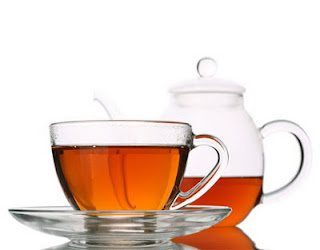Tea is
synonymous with health. Habit of sipping a cup of tea is also effective to
reduce stress, prevent hypertension, to reduce the risk of heart disease. There
are different kinds of tea in the world, but in general there are four types of
tea which properties should not be underestimated.
1.
Darjeeling
Tea is
touted as the world's best tea is picked from the tea plant that grows in the
Himalayas in the Darjeeling region of India.
A recent
study found the benefits of tea to inhibit the growth of pathogens that can
cause pain H.pylori gastritis, peptic ulcers, and cancer colon. And, among the
tea is Darjeeling tea was a direct positive effect on a five-minute intervals
after drinking. To optimize the effect, avoid consuming tea mixed with milk.
2. Oolong Tea
Also
referred to as semi-fermented tea. Oolong tea is very wide variation, from mild
and sweet, until the tea is more strong and bitter.
According
to a study of more than 1,500 subjects, those who drank two and a half cups of
oolong tea or green tea every day, the risk of high blood pressure 46 percent
lower. Oolong and green tea rich in antioxidants are effective to control the
enzyme triggers an increase in blood pressure.
3. Black
Tea
When the
tea leaves left to ferment until the whole, they will turn into black tea,
although the actual color is closer to red.
Many people
prefer to have a healthy green tea, black tea but not less antioxidant. Four
components of the antioxidants in black tea are known to protect brain from
damage by way of specifics. Last year researchers from Germany revealed that
black tea can protect the process of plaque formation in the brain that trigger
Alzheimer's disease.
4. Yerba
Mate
Derived
from the leaves of plants that are considered sacred by the natives of South
America, yerba mate herb belonging to the powerful. To reduce bitterness, yerba
mate leaves enter into the warm water (not boiling).
Research in
2011 showed, yerba mate has the ability to destroy cancer cells. Components in
tea, including caffeine, can damage the DNA of cancer cells.



























